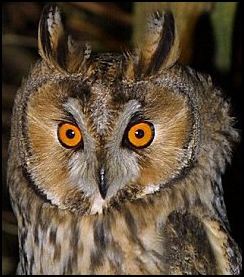Turkmenistan

Birding Turkmenistan
Turkmenistan, it was a constituent republic of the Soviet Union, the Turkmen Soviet Socialist Republic (Turkmen SSR). It is bordered by Afghanistan to the southeast, Iran to the southwest, Uzbekistan to the northeast, Kazakhstan to the northwest, and the Caspian Sea to the west. The name Turkmenistan derives from Persian, meaning ‘land of the Turkmen’. The name of its capital, Ashgabat, means ‘the City of Arsaces’ in Persian. It also loosely translates as ‘the city of love’ or ‘the city that love built’, derived in folk etymology from the Arabic ishq for ‘love’ with the Persian suffix abad for ‘inhabited’ or ‘built’.Although it is wealthy in natural resources in certain areas, most of the country is covered by the Karakum (Black Sands) Desert.
At 488,100 km2 (188,500 sq mi), Turkmenistan is the world’s 52nd-largest country. It is slightly smaller than Spain and somewhat larger than the US state of California.Over 80% of the country is covered by the Karakum Desert. The center of the country is dominated by the Turan Depression and the Karakum Desert. The Kopet Dag Range, along the southwestern border, reaches 2,912 meters (9,553 ft) at Kuh-e Rizeh (Mount Rizeh). The Great Balkhan Range in the west of the country (Balkan Province) and the Kugitangtau Range on the south-eastern border with Uzbekistan (Lebap Province) are the only other significant elevations. The Great Balkhan Range rises to 1,880 metres (6,200 ft) at Mount Arlan[14] and the highest summit in Turkmenistan is Ayrybaba in the Kugitangtau Range – 3,137 metres (10,290 ft). Rivers include the Amu Darya, the Murghab, and the Tejen.The climate is mostly arid subtropical desert, with little rainfall. Winters are mild and dry, with most precipitation falling between January and May. The area of the country with the heaviest precipitation is the Kopet Dag Range.The Turkmen shore along the Caspian Sea is 1,768 kilometres (1,099 mi) long. The Caspian Sea is entirely landlocked, with no access to the ocean.The major cities include Ashkhabad, Türkmenbaşy (formerly Krasnovodsk) and Daşoguz.
-
Wikipedia
GNU Free Documentation License
http://en.wikipedia.org/wiki/Turkmenistan
-
Number of bird species: 409
(As at December 2018)National Bird - Black Francolin Francolinus francolinus
-
iGoTerra Checklist
iGoTerra ChecklistFatbirder Associate iGoTerra offers the most comprehensive and up to date birds lists on the web
-
Birds of Central Asia
(Kazakhstan, Turkmenistan, Uzbekistan, Kyrgyzstan, Tajikistan & Afghanistan) | By Raffael Ayé, Manuel Schweizer & Tobias Roth | Christopher Helm | 2012 | Paperback | 336 pages, 141 plates with colour illustrations; 14 colour photos, 5 b/w illustrations, 3 colour maps, colour distribution maps | ISBN: 9780713670387 Buy this book from NHBS.com -
The Butterflies of Turkmenistan
By Vadim V Tshikolovets | Tshikolovets Publications | 1998 | Hardback | 237 pages, 24 colour plates; illustrations, distribution maps | ISBN: 9789660205116 Buy this book from NHBS.com
-
Hazar State Natural Reserve
InformationSatellite ViewIt is located on the south-east coast of the Caspian Sea, in Balkan Province and covers an area of 2,690 km². Ogurjaly Sanctuary is part of this nature reserve. -
Protected areas of Turkmenistan
InformationSatellite ViewInteractive list
-
2012 [05 May] - Thomas Petterson
PDF ReportAll in all we recorded 184 species, but we can’t say that we made any major discoveries, although a few sightings were well out of known distribution, e.g. Bay-backed Shrike near Repetek and Calandra Lark in the Kopet Dag. Nevertheless there were some disappointments regarding species that we did not encounter and that we had hoped for (for good reasons, we thought): Lesser Kestrel, Saker Falcon, Caspian Snowcock, Macqueen’s Bustard, Black-bellied Sandgrouse, Pin-tailed Sandgrouse, Eurasian Eagle-owl, Scaly-bellied Woodpecker, Greater Short-toed Lark, Water Pipit (coutellii), Radde’s Accentor, Desert Wheatear, Cetti’s Warbler, Moustached Warbler, Paddyfield Warbler, Plain Leafwarbler, Desert Warbler, Black-headed Penduline-tit, White-crowned Penduline-tit, Zarudny's Sparrow, Trumpeter Finch, White-winged Grosbeak, Grey-necked Bunting.
-
Unique ornithological reserve near Turkmen coast of Caspian Sea
ArticleHazar State Natural Reserve can be called ornithological because its main goal is to preserve habitats of waterfowl and waterbirds, the State Committee for Environmental Protection and Land Resources of Turkmenistan said in a message.

